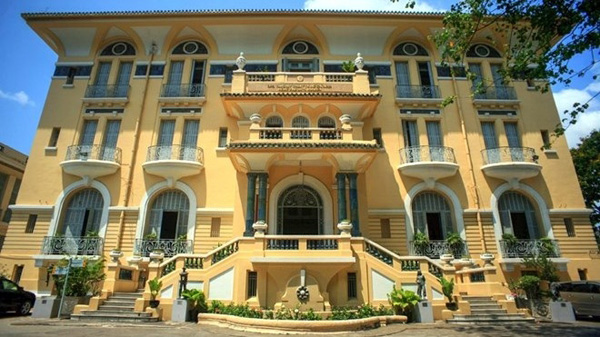
Japan’s contemporary artworks are being introduced to the public in Ho Chi Minh City at the "10 in Ho Chi Minh City” exhibition which opened on July 17.

Ho Chi Minh City Fine Arts Museum where the exhibition takes place (Source: kyluc.vn)
Ten Japanese artists have brought 54 abstract artworks to the
exhibition, covering various genres from oil painting to installations.
Speaking at the opening ceremony,
Huynh Van Muoi, President of the Ho Chi Minh City Fine Arts Association, said
that the exhibition takes place in the context of Vietnam
and Japan’s
celebration of the 45th founding anniversary of diplomatic ties, helping to
tighten the two countries’ friendship and increase the exchange of their fine
arts.
According to Muoi, the artworks
reflect part of Japan’s
contemporary fine arts which combine modern life and the preservation of
traditional culture and history.
Aki Miwa, a painter whose works are
on display at the exhibition, expressed her hope that such exhibitions will be
organised more regularly to enhance the bilateral friendship and solidarity.
The exhibition will run at the Ho Chi Minh City
Fine Arts Museum until July 21.
Source: NDO
With an increasingly vibrant and widespread emulation movement aimed at building cultured residential areas and cultured families, Yen Thuy District has been making steady progress toward improving both the material and spiritual well-being of its people, while fostering a civilized, prosperous, beautiful, and progressive community.
Once lacking recreational spaces and community facilities, Residential Group 2 in Quynh Lam Ward (Hoa Binh City) has recently received attention for the construction of a new, spacious, and fully equipped cultural house. The project followed the model of state support combined with public contributions in both labor and funding.
The "All people unite to build cultural life" movement, which has been effectively integrated with Kim Boi district’s socio-economic development goals, is fostering a lively spirit of emulation across local residential areas, hamlets, villages, public agencies, and enterprises. In addition, through the initiative, traditional cultural values are being preserved and promoted, while community solidarity and mutual support in poverty reduction and economic development are being strengthened.
A working delegation of the Hoa Binh provincial People’s Committee led by its Permanent Vice Chairman Nguyen Van Toan on June 11 inspected the progress of a project to build the Mo Muong Cultural Heritage Conservation Space linked to tourism services in Hop Phong commune, Cao Phong district.
Born and growing in the heroic land of Muong Dong, Dinh Thi Kieu Dung, a resident in Bo town of Kim Boi district, in her childhood was nurtured by the sweet lullabies of her grandmother and mother. These melodies deeply imprinted on her soul, becoming an inseparable part of her love for her ethnic group's culture. For over 20 years, this love for her hometown has driven Dung to research, collect, and pass down the cultural values of the Muong people to future generations.
In the final days of May, the Ethnic Art Troupe of Hoa Binh Province organized performances to serve the people in remote, mountainous, and particularly disadvantaged areas within the province. These were not just ordinary artistic shows, but they were the meaningful journeys aimed at spreading cultural values, enhancing the spiritual life of the people and contributing to the preservation of ethnic minority cultural identities.



